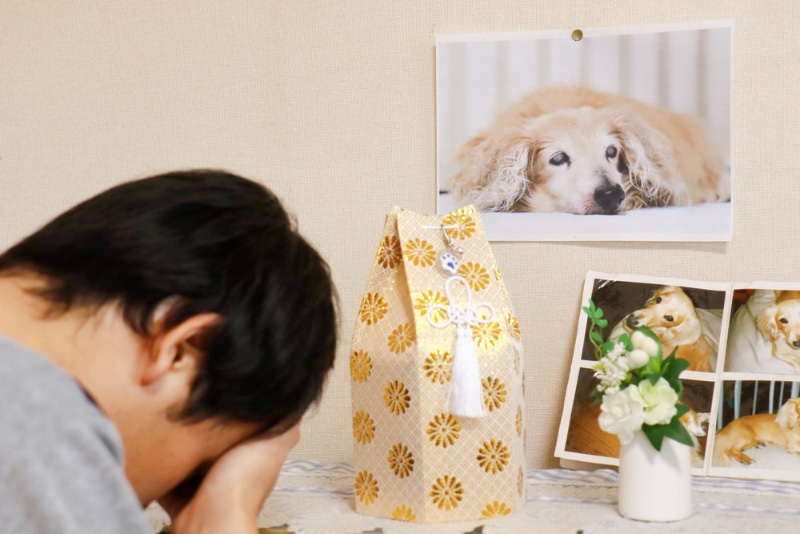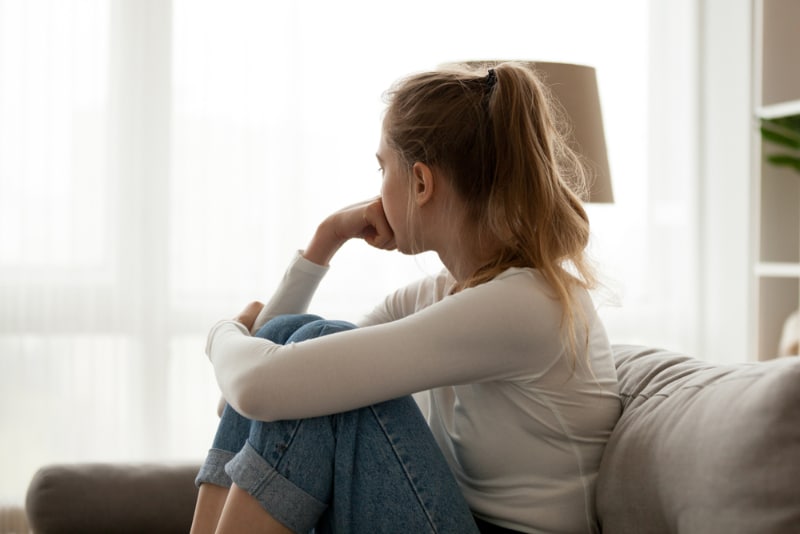Losing a beloved pet is an extremely hard experience to undertake. Even if we think that we are prepared for our pet to pass on, the event is still never easy to deal with. The grief is real and raw and can be so intense that it feels like it can’t be endured.
While everyone grieves in their own way, there are six stages of grief that most people experience after losing a pet. If you’ve experienced this tragedy, understanding the grief stages can make it easier to navigate them.

An Important Note
Not everyone grieves the loss of a beloved companion in the same way. Everyone is unique when it comes to processing feelings and managing thoughts. So, while there are technically six stages of grief that can be experienced after losing a pet, you may not experience them in the same order, and you may not even experience all of them. Being aware of the stages can simply help you identify what you’re feeling during this time.

The 6 Stages of Grief After Losing a Pet
1. Feeling Shocked
Shock is typically the first thing that a person feels after losing a pet that they’ve bonded with, even if the death was anticipated. That said, the feeling of shock is usually more prevalent if the loss is unexpected. When in shock, feelings of being detached from “reality” and emotional numbness can present themselves. It can affect your appetite because you may no longer be interested in food. It can also cause problems with sleeping and concentrating. You might find that you yearn to reunite with your pet or that you want to avoid anything or mention that reminds you of them.
2. Being in Denial
Once feelings of shock start to wear off or in some cases, while it is still a factor, denial tends to set in. The reason for denial is to try to distance yourself from the circumstances. Instead of accepting the loss of your family pet, it seems easier to just ignore and deny it. This stage of grief can help you pace your feelings so they don’t become too overwhelming. As time passes, you will start to accept the loss more and have an easier time processing it.

3. Feeling Angry
This stage of grief is when you feel like you just want to yell, hit something, and cry out of frustration. Anger from grief is usually just a surface emotion that’s trying to ward off the pain. Lashing out at others, being mad at yourself, and feeling irritated about the whole situation are all natural experiences for those who are grieving their pet during the anger stage.
4. Wanting to Bargain
Many people start to bargain with their feelings over the loss of their pet, perhaps out of desperation or feelings of guilt. Since you want your pet to be alive again so badly, you may start to bargain with yourself to try to make sense of everything. Thoughts like “If only I had …” and “What if this would have happened instead …” creep in, as if they can somehow erase what has happened. If you are spiritual or religious, you might try to bargain with God or the universe in an attempt to get rid of your pain.

5. Experiencing Depression
After denying the situation, getting angry, and trying to bargain with your feelings, you may become depressed as you work your way through the rest of the grieving process. Becoming depressed due to the loss of a pet is normal and does not indicate mental illness in any way. A heavy sadness that you just can’t shake, feeling dissatisfied with anything that’s happening in your life, and wanting to withdraw are all things that you might feel during this stage.
6. Accepting the Circumstances
Finally, when you have made your way through all the terrible feelings of losing your pet, you will start to accept the circumstances and start enjoying life and looking toward the future again.
Accepting your loss doesn’t mean that you are no longer affected by it. You’re simply acknowledging the reality of the situation and that you have no choice but to move forward while keeping the memory of your pet alive as time goes on. This is when you start to adjust to life without your pet and learn how to move on without feelings of shame or guilt.


Things That You Can Do to Cope While You’re Grieving
There are several things that you can do to better cope with the loss of your pet so the grieving process does not become too overwhelming. The first (and one of the most important) things that you should do is acknowledge your grief and allow yourself to experience and express your emotions.
If you feel like crying, don’t hold back. If you get angry, throw water balloons against the wall as hard as you can. Not acknowledging your feelings can prolong the grieving process.
- Instead of focusing on the loss of your pet, try to remember the good times that you shared and keep your favorite memories in mind. Don’t forget that your pet is no longer in pain and that they would not want you to wallow in pain by yourself. By remembering your life together, you can help keep them in your life now.
- Find a support group in your community to share your feelings with. You can learn how others cope with their grief and gain a sense of community with those who know exactly what you are going through. Lap of Love offers free online group support sessions and paid support courses to take advantage of if you can’t find the support that you need locally.
- Memorializing your beloved pet is a great way to bring closure to your loss. You can do this by spreading their ashes somewhere that is special to you both, planting a tree in your yard in their name, creating a memory box that holds a favorite toy, picture, and other knick-knacks that remind you of them, and having a painting of them created to hang somewhere in your home.

Conclusion
Grief is a natural part of the healing process after losing a beloved family pet, whether the loss is expected or not. By acknowledging the different stages of grief and being open to the feelings that you have throughout, you can better cope and ensure that things don’t become too overwhelming during the months after your loss.
Featured Image Credit: takasu, Shutterstock









